Professional plate
Vraag
Is this from the year 1969? and do you know if it is a fake? It looks like there are round marks in the glaze which seems unusual.
Afmetingen
34cm
Collectie
publiekscollectie
Merk


















Reacties 13
Is it possible to give more information about the profession and what the picture shows? Also, how would you translate the text?
Hi Lucy,
It's definitely real and made by the Porceleyne Fles in Delft. The year code looks like CG which is 1962 and the craquelé in the glaze is very common for a plate of that age.
The text is in old Dutch and means something along the lines of: If you've broken a bone/member, the master needs to attend quickly. On the bottom it says: The surgeon.
The picture shows the surgeon at work. I don't know if that picture is a copy of a painting.
Kind regards,
Patrick
Als antwoord op Hi Lucy, It's definitely… door PatrickW492
Thank you very much for the information this is brilliant!
Your plate was painted by C. Bak who painted at the Porceleyne fles from 1934 till 1981 and painted after the painting "Surgeon treating the foot of a farm worker" by David Teniers de Jonge.
Kind regards, Franky
Dear people, it is a bit different, the representation on the board (dish) is made after an engraving by Jan Luiken from Spiegel van het menselyk bedryf, met Godly proverbs and edifying verses, 1730, here is the image, greetings, jvdh.
is made after an engraving by Jan Luiken from Spiegel van het menselyk bedryf, met Godly proverbs and edifying verses, 1730, here is the image, greetings, jvdh.
Beste mensen, het ligt iets anders, de voorstelling op het bord (schotel) is gemaakt naar een gravure van Jan Luiken uit Spiegel van het menselyk bedryf, met Godlyke spreuken en stichtelyke verzen, 1730, hierbij de afbeelding, groet, jvdh.
David Teniers II, also called David Teniers the Younger (baptized in Antwerp, December 15, 1610 - Brussels, April 25, 1690), was a Flemish Baroque painter. He descended from the branch of Jan Breughel the Elder who was the son of Pieter Breughel the Elder.
Jan Luiken's etching is therefore inspired by a painting from approximately 1650.
entitled The Surgeon
Oil on canvas
and the original is in the Museum del Prado In Madrid. Several interpretations and also forgeries were made.
David Teniers II, ook David Teniers de Jonge genoemd (gedoopt te Antwerpen, 15 december 1610 – Brussel, 25 april 1690), was een Vlaamse barokschilder. Hij stamde af van de tak van Jan Breughel de oude die de zoon was van Pieter Breughel de oude.
De ets van jan Luiken is dus geïnspireerd op een schilderij uit 1650 ongeveer.
getiteld The Surgeon
Olie op doek
en het origineel bevindt zich in het Museum del Prado In Madrid. Er werden meerdere interpretaties en ook vervalsingen gemaakt.
And for completeness an excerpt from page 145 of the book Royal Delft, A guide to the Porceleyne Fles by Rick Erickson with the 2 other plates in this professional series:
Als antwoord op And for completeness an… door PatrickW492
Klopt helemaal Patrick.
Wat ik vermoed is dat Luycken zich liet inspireren door de werken van David Teniers en de Porceleyne fles zich baseerde op hun werken daar ze Nederlands waren. David Terniers was een Vlaming, dus een heel eind weg van Nederland toendertijd. In 1920 was er nog niet zoiets als een goede communicatie en bestond niet de mogelijkheid zaken op een eenvoudige wijze op te zoeken. Het interessante is dat Teniers in de periode tussen 1630 en 1640 tal van dergelijke " binnenhuis" schilderijen maakte die nu nog regelmatige worden teruggezien op delfts aardewerk. Denk aan de alchemist, de herbergier, kaartspelers in de herberg, de schoolmeester enz... Interessante materie
That's exactly right Patrick. What I suspect is that Luycken was inspired by the works of David Teniers and the Porceleyne fles based on their works as they were Dutch. David Terniers was Flemish, so a long way from the Netherlands at the time. In 1920 there was no such thing as good communication and no way to look things up in a simple way. The interesting thing is that Teniers made numerous such "indoor" paintings in the period between 1630 and 1640, which are still regularly seen on Delft pottery. (NKI, Goedewaagen, etc.) Think of the alchemist, the innkeeper, card players in the inn, the schoolmaster, etc.... Interesting subject matter
Als antwoord op And for completeness an… door PatrickW492
It says in this excerpt that the 34cm plates were discontinued in 1960, and yet my plate appears to be from 1962. Is that right?
All in all a nice discussion, also a piece of art history genealogy, as for the difference of two years, never mind, according to the book the 34 cm dish with surgeon would have been produced under number 9056, and the dish shown here has number 1129, from where? It doesn't matter that much, the most important thing is 'hand-painted, underglaze painting, second half of the 20th century, Porceleyne Fles, Delft'. Some air bubbles in the glaze on the edge. Thank you all, greetings jvdh.
Al met al een aardige discussie, ook nog een stukje kunstgeschiedenisgenealogie, wat betreft het verschil van twee jaar, laat maar rusten, volgens het boek zou de 34 cm schotel met chirurgijn geproduceerd zijn onder nummer 9056, en de hier getoonde schotel heeft nummer 1129, vanwaar? Maakt allemaal niet zo veel uit, het belangrijkste is ’handgeschilderd, onderglazuurschildering, tweede helft 20e eeuw, Porceleyne Fles, Delft’. In de rand wat luchtbelletjes in het glazuur. Allen dank, groet jvdh.
Beoordeling:
Toelichting:
Merk:
What a lovely discussion! Very illustrated
Reactie toevoegen
Alleen ingelogde gebruikers kunnen reacties plaatsen
Login of registreer om te reageren